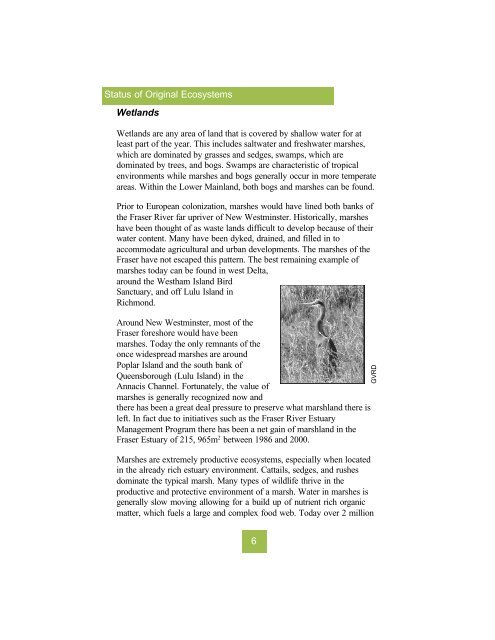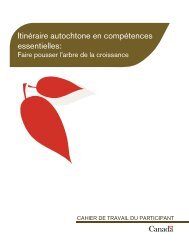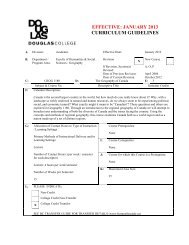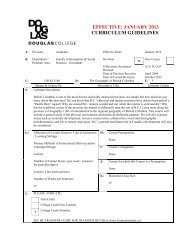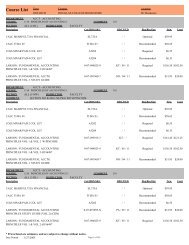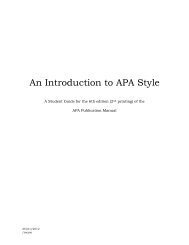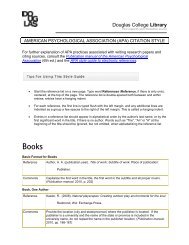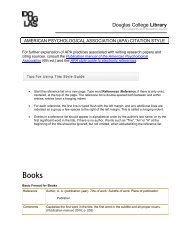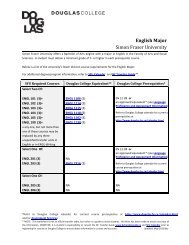New Westminster Environmental Almanac (2917 ... - Douglas College
New Westminster Environmental Almanac (2917 ... - Douglas College
New Westminster Environmental Almanac (2917 ... - Douglas College
Create successful ePaper yourself
Turn your PDF publications into a flip-book with our unique Google optimized e-Paper software.
Status of Original Ecosystems<br />
Wetlands<br />
Wetlands are any area of land that is covered by shallow water for at<br />
least part of the year. This includes saltwater and freshwater marshes,<br />
which are dominated by grasses and sedges, swamps, which are<br />
dominated by trees, and bogs. Swamps are characteristic of tropical<br />
environments while marshes and bogs generally occur in more temperate<br />
areas. Within the Lower Mainland, both bogs and marshes can be found.<br />
Prior to European colonization, marshes would have lined both banks of<br />
the Fraser River far upriver of <strong>New</strong> <strong>Westminster</strong>. Historically, marshes<br />
have been thought of as waste lands difficult to develop because of their<br />
water content. Many have been dyked, drained, and filled in to<br />
accommodate agricultural and urban developments. The marshes of the<br />
Fraser have not escaped this pattern. The best remaining example of<br />
marshes today can be found in west Delta,<br />
around the Westham Island Bird<br />
Sanctuary, and off Lulu Island in<br />
Richmond.<br />
Around <strong>New</strong> <strong>Westminster</strong>, most of the<br />
Fraser foreshore would have been<br />
marshes. Today the only remnants of the<br />
once widespread marshes are around<br />
Poplar Island and the south bank of<br />
Queensborough (Lulu Island) in the<br />
Annacis Channel. Fortunately, the value of<br />
marshes is generally recognized now and<br />
there has been a great deal pressure to preserve what marshland there is<br />
left. In fact due to initiatives such as the Fraser River Estuary<br />
Management Program there has been a net gain of marshland in the<br />
Fraser Estuary of 215, 965m 2 between 1986 and 2000.<br />
Marshes are extremely productive ecosystems, especially when located<br />
in the already rich estuary environment. Cattails, sedges, and rushes<br />
dominate the typical marsh. Many types of wildlife thrive in the<br />
productive and protective environment of a marsh. Water in marshes is<br />
generally slow moving allowing for a build up of nutrient rich organic<br />
matter, which fuels a large and complex food web. Today over 2 million<br />
6<br />
GVRD


